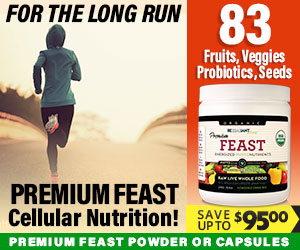Welcome to your comprehensive resource on whole food nutrientsâessential components of a balanced diet that can transform your health in 2025. In this guide, Iâll share the most impactful nutrients derived directly from whole foods, backed by the latest research and practical advice to help you optimize your nutrition plan this year.
1. Omega-3 Fatty Acids
Understanding Omega-3s and Their Benefits
Omega-3 fatty acids are essential fats vital for brain health, reducing inflammation, and supporting heart function. Unlike other fats, our bodies cannot produce these fatty acids naturally, so obtaining them through whole foods is crucial. In 2025, the focus on omega-3s remains high as research continues to demonstrate their role in preventing chronic diseases, including cardiovascular issues and mental health disorders.
Sources like fatty fishâsuch as salmon, mackerel, and sardinesâare top choices for omega-3s. Incorporating these fish into your diet at least twice a week can significantly boost your intake. For plant-based options, chia seeds, flaxseeds, and walnuts provide alpha-linolenic acid (ALA), a form of omega-3 that the body partly converts into the more active forms EPA and DHA.
Tip: For those who donât consume fish, consider high-quality omega-3 supplements derived from algaeâthese are sustainable and contain the same beneficial compounds found in marine sources.
Practical Tips to Maximize Omega-3 Intake
- Include fatty fish in meals twice weekly
- Add ground flaxseed or chia seeds to smoothies and oatmeal
- Eat walnuts as a snack or topping for salads
2. Antioxidant-Rich Berries
The Power of Berries for Disease Prevention
Berries like blueberries, strawberries, raspberries, and blackberries are packed with antioxidants, especially anthocyanins that combat oxidative stress. In 2025, innovative research emphasizes the role of berries in reducing the risk of chronic illnesses such as heart disease, diabetes, and even certain cancers. These small, vibrant fruits are an excellent way to boost your whole food nutrient intake naturally.
Adding berries to your breakfast or snacks enhances not only flavor but also nutrient density. Studies show that regular berry consumption can improve cognitive function and support gut health due to their prebiotic fibers and polyphenols.
My tip: Freeze berries to have a fresh supply year-round. Toss them into smoothies, yogurt, or oatmeal for an effortless nutrient boost. Remember, organic berries tend to have fewer pesticide residues, making them a cleaner choice.
Tips to Incorporate More Berries Into Your Diet
- Start your day with a bowl of oatmeal topped with fresh berries
- Mix berries into your smoothies for a natural sweetness boost
- Use berries as toppings for yogurt or salads
3. Folate from Dark Greens
The Role of Folate in Cell Health and Pregnancy
Folate, also known as vitamin B9, is abundant in dark green vegetables such as spinach, kale, and Swiss chard. Its importance in DNA synthesis and cell repair makes it essential for overall health, especially during pregnancy to prevent neural tube defects. In 2025, increasing folate intake from whole food sources remains a priority, especially among plant-based diets.
Consuming a variety of dark leafy greens regularly ensures sufficient folate levels. Beyond pregnancy, adequate folate supports cardiovascular health and may reduce the risk factors associated with age-related cognitive decline.
For best absorption, lightly steam greens to retain nutrients while making absorption easier for your body. Adding these vegetables to soups, stir-fries, or smoothies is an excellent strategy.
How to Boost Your Folate Intake
- Include dark leafy greens in salads and side dishes daily
- Add greens to smoothies for a nutrient-rich drink
- Use as a base for healthy stir-fries and sautés
4. Vitamin C from Citrus Fruits
Boosting Immunity and Skin Health
Citrus fruits like oranges, grapefruits, lemons, and limes are iconic sources of vitamin C, vital for immune function, skin elasticity, and wound healing. As of 2025, immune health remains a top concern globally, making vitamin C from whole foods more relevant than ever.
Eating a fresh citrus daily provides a potent dose of antioxidants that neutralize free radicals. Additionally, vitamin C enhances iron absorption from plant foods, which is particularly important for vegetarians and vegans.
To maximize benefits, consume whole citrus instead of juices, which can be high in sugar and lose some nutrients. The fiber in whole fruit supports digestion and sustained energy release.
Creative Ways to Incorporate Citrus
- Start your morning with a grapefruit or orange slices
- Add lemon juice to salads, water, or seafood dishes
- Use citrus zest in baking for added flavor and nutrients
5. Magnesium from Nuts and Seeds
The Benefits for Muscle and Nerve Function
Magnesium is a crucial mineral involved in over 300 biochemical reactions, including muscle function, nerve transmission, and bone health. For 2025, increasing magnesium intake from whole food sources such as almonds, pumpkin seeds, and cashews is highly recommended due to modern dietary patterns being magnesium-deficient.
Nuts and seeds are nutrient-dense and serve as a convenient snack or addition to meals. Consuming them regularly can help prevent cramps, fatigue, and support heart health.
Tip: Soaking nuts and seeds before eating reduces phytates and enhances mineral absorption. Incorporate a handful into your daily diet through trail mixes or as toppings.
Practical Tips for Boosting Magnesium Intake
- Snack on mixed nuts and seeds between meals
- Add ground flax or chia seeds to smoothies and cereals
- Use nut butters as spreads or in baking
6. Beta-Carotene from Carrots
Eye Health and Immune Support
Carrots are one of the most well-known sources of beta-carotene, which the body converts into vitamin A, essential for good vision, immune defense, and skin health. In 2025, emphasizing colorful root vegetables like carrots serves as a simple way to improve overall nutrition.
Huge Discount on the Best Certified Organic Whole Food Supplement!
Eating carrots raw, roasted, or shredded into salads ensures you get ample beta-carotene. Their antioxidant properties may also slow the aging process of skin and tissues.
For better absorption, pair carrots with a small amount of healthy fats like olive oil or avocadoâthe fat helps your body utilize beta-carotene more efficiently.
Creative Ways to Include Carrots in Your Diet
- Snack on raw carrot sticks with hummus
- Roast carrots with herbs as a side dish
- Shred carrots into salads or add to stir-fries
7. Probiotics from Fermented Foods
Supporting Gut and Immune Health
Fermented foods like yogurt, sauerkraut, kimchi, and kefir are natural sources of probiotics, beneficial bacteria that support gut health. In 2025, the importance of microbial diversity in maintaining overall health is widely recognized, making fermented foods a cornerstone of a whole food diet.
Regular consumption can enhance digestion, improve nutrient absorption, and strengthen immune responses. Many people find that fermented foods also improve mood and reduce inflammation.
Tip: Choose minimally processed, naturally fermented options for maximum probiotic benefits. Avoid products with added sugars or artificial preservatives.
How to Incorporate Fermented Foods into Your Daily Routine
- Start your day with a serving of probiotic yogurt
- Add sauerkraut or kimchi to sandwiches and salads
- Use kefir as a base for smoothies or drink it plain
8. Vitamin K2 from Natto
Bone and Cardiovascular Health
Natto, a traditional Japanese fermented soyfood, is one of the best whole food sources of vitamin K2. This nutrient plays a critical role in directing calcium to bones and teeth, reducing the risk of osteoporosis and arterial calcification. In 2025, awareness about vitamin K2âs benefits continues to grow, encouraging more people to include natto in their diet.
Although natto has a strong flavor and aroma, its health benefits are significant enough to consider adding it to your menu. It can be served with rice, used as a topping, or mixed into salads.
For those who dislike natto, consider supplementing or exploring other fermented soy products with lower K2 levels.
Tips for Incorporating Natto
- Try nativeling natto with soy sauce and green onions
- Mix into rice bowls for a nutrient boost
- Combine with other fermented foods for variety
9. Iron from Legumes
Plant-Based Iron Sources
Legumes such as lentils, chickpeas, black beans, and kidney beans are rich in non-heme iron, vital for oxygen transport and energy production. In 2025, as plant-based diets gain popularity, knowing how to maximize iron absorption from legumes is essential.
To improve absorption, pair legumes with vitamin C-rich foods like bell peppers and tomatoes. Cooking legumes properly and reducing anti-nutrients like phytates can also enhance bioavailability.
Incorporating a variety of legumes into salads, stews, and spreads not only boosts iron intake but also adds fiber, protein, and essential nutrients to your diet.
Practical Tips for Iron-Rich Meals
- Make lentil soups or stews regularly
- Use chickpeas in salads or as hummus
- Add black beans to rice bowls and tacos
10. Phytonutrients from Colorful Vegetables
The Benefits of a Rainbow Plate
Colorful vegetables such as bell peppers, zucchini, eggplant, and beets contain a broad spectrum of phytonutrientsâplant compounds that protect against disease and enhance health. In 2025, eating a rainbow of vegetables is promoted as a simple, effective way to ensure diverse whole food nutrient intake.
These compounds support detoxification, reduce inflammation, and improve immune function. The variety also helps prevent nutrient gaps and keeps meals interesting.
My advice: Aim for at least 5 servings of colorful veggies daily. Incorporate them into every mealâroasted, raw, steamed, or juicedâfor maximum benefit.
Creative Ways to Eat a Rainbow
- Prepare colorful stir-fries with mixed vegetables
- Make vibrant salads with a variety of bell peppers, beets, and carrots
- Use veggie-based pasta or spiralized vegetables as main dishes
Frequently Asked Questions About Whole Food Nutrients for 2025
- What are the best whole food nutrients to focus on in 2025?
- Key nutrients like omega-3 fatty acids, antioxidants from berries, vitamin C from citrus, and vitamin K2 from natto are among the top focus areas in 2025 due to their wide-ranging health benefits.
- Why are whole food nutrients better than supplements?
- Whole food nutrients provide a complex blend of vitamins, minerals, and bioactive compounds that work synergistically, offering better absorption and additional health benefits compared to isolated supplements.
- How can I ensure Iâm getting enough whole food nutrients?
- Eat a varied diet rich in fruits, vegetables, nuts, seeds, whole grains, and fermented foods. Focus on colorful, minimally processed foods, and consider consulting with a nutritionist for personalized advice.
- Are whole food nutrients sufficient for optimal health?
- Yesâwhen combined with a balanced lifestyle, whole food nutrients support overall well-being. They reduce reliance on processed foods and boost your immune system naturally.
- How can I incorporate more whole food nutrients into my diet in 2025?
- Plan your meals around nutrient-dense foods, experiment with seasonal produce, and try new recipes that highlight these vital nutrients. Keep variety and freshness at the forefront of your diet plan.




